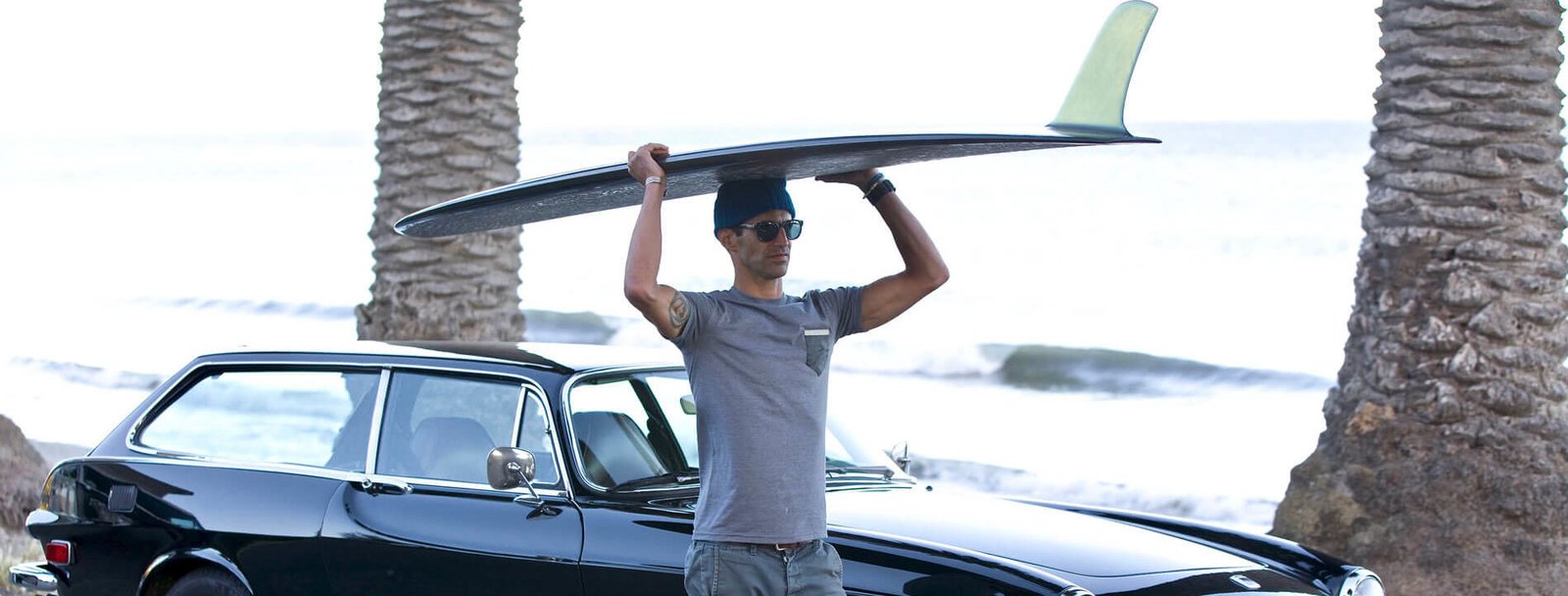The longer story…
This all started in 2011 when I was living above a broom factory in Brooklyn.
Late one sleepless night, I found myself staring at my (surfboard) quiver, and more specifically, the bags they were stored in. I came to the realization that while all of the bags were functional, there was a lot of room for improvement. They were all made overseas, none of them were recycled, and they lacked all aesthetic appeal.
Lying on the ground below my board bags was an old sailboat sail that I had acquired for work. At the time, I was creating custom props and elaborate sets for live events and experience based marketing. This sail’s fate: a fashion show and then a landfill.
I thought to myself, how cool would it be to give these sails that were originally designed to be used at sea, a second chance romance with the wind, salt, and sand?
That’s when I decided to combine two of my passions – surfing and sailing – to create a surfboard bag that not only incorporates up-cycled sailboat sails, but utilizes as many environmentally friendly components as possible without sacrificing durability.
In my opinion, surfboard bags available today fall into a few categories.
- The major players sell bags that work, but are made overseas and aren’t recycled or particularly special.
- There are some smaller brands and individuals making cool (and sometimes recycled) surfboard socks, but they don’t provide much protection for your board.
- There are a few companies selling padded ‘recycled’ surfboard bags, however, usually only one element of the bag is recycled and everything else is harmful to the environment.
While I wasn’t quite ready to quit my day job, I did start collecting old sails that would have otherwise been destined for landfills and began to research and test various materials with an emphasis on sustainability and durability. The deeper I dove into this process, the more questions I had and more challenges were identified that needed to be solved. For example…
- How do you attach a shoulder strap to a bag without using plastic that’s bad for the environment or metal that might damage the paint on top of your car?
- Why does everyone use ¼” foam? Is this the ideal thickness?
- Does recycled foam exist?
- What’s the best waterproof material to line the bags?
- Will sailors be interested in donating their old sails?
- Where am I going to put all of this stuff?
Questions led to research, testing, prototypes, and often more questions. It was fascinating and daunting and something that I was committed to solving – as a sailor, a surfer, and an environmental steward.
A few years later, I returned to my hometown of Santa Barbara, CA to make my passion my livelihood. I bought a few industrial sewing machines, taught myself to sew, and am now fully invested in propelling the planet one Paradise Bag at a time.
That’s my story. Check out the stories from our ambassadors and please share your own. We’d love to see pics of you with your Paradise Bag or Spinn Shirt!
Paradise Is Divided Into Blue And Green is based in Santa Barbara, CA. All of our manufacturing is done in-house or just a few miles away.


